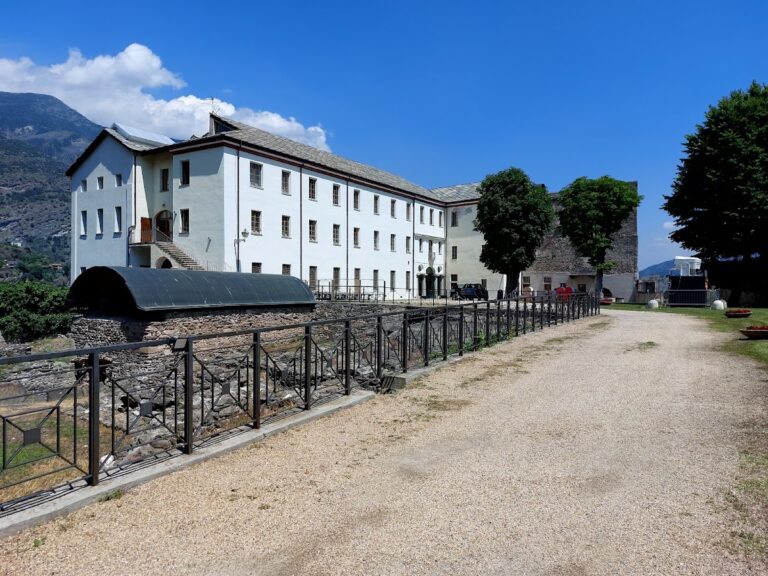Arco di Augusto in Susa: A Roman Triumphal Arch in Northern Italy
Visitor Information
Google Rating: 4.6
Popularity: Medium
Google Maps: View on Google Maps
Official Website: www.cittadisusa.it
Country: Italy
Civilization: Roman
Remains: Civic
History
The Arco di Augusto is located in Susa, a town in the province of Turin, in the Piedmont region of northern Italy. This monument was built by the Romans during the late 1st century BCE in the ancient city of Segusio, which was part of the Roman Empire. The arch stands on a hill west of the city, near the route connecting Augusta Taurinorum (modern Turin) to Vapincum (modern Gap) through the Cottian Alps.
Construction of the arch took place between 9 and 8 BCE. It was commissioned by Marcus Julius Cottius, the local king of the Ligurian tribes, to honor Emperor Augustus. The monument commemorates the foedus, or alliance treaty, signed in 13 BCE between Cottius and Augustus. This treaty marked the integration of the Alpine tribes under Roman authority, with Cottius recognized as prefect over fourteen tribal communities. Augustus himself inaugurated the arch during his return from Gaul, underscoring the political importance of this alliance.
In the following centuries, the arch remained a significant landmark outside the city walls, which were constructed later in the 3rd century CE. The site around the arch included a sacred precinct with an altar and a heroon, a shrine dedicated to Cottius. The arch’s alignment toward the Rocciamelone peak, a mountain sacred to local pre-Roman populations, reflects its religious and symbolic role beyond its commemorative function.
Over time, the city of Segusio evolved under Roman rule, but the arch continued to stand as a reminder of the early alliance between Rome and the Alpine tribes.
Remains
The Arco di Augusto is a single-arched monument made primarily of white marble quarried near Foresto. It rests on a foundation and base blocks of grey limestone. The arch measures approximately 13.3 meters in height, 11.93 meters in width, and 7.3 meters in depth. The opening of the archway is about 5.38 meters wide and 8.8 meters high. The structure is built with precisely cut stone blocks fitted without mortar, demonstrating advanced Roman masonry combined with local craftsmanship.
Four fluted Corinthian columns, partially embedded in the corners of the arch, rise about 7.56 meters tall. These columns stand on grey limestone bases and support an Ionic entablature above. The entablature features a three-banded architrave with an unusual arrangement of bands and a decorated horizontal geison with rosette-filled coffers. Some coffers include motifs such as an eagle and a leaf with a lizard, adding symbolic detail.
Above the entablature is a 2.16-meter-high attic that once bore bronze-letter inscriptions on its north and south faces. Although the bronze letters are now lost, their original positions remain visible through mounting holes. The inscriptions name Marcus Julius Cottius as prefect of fourteen tribal communities, listing them explicitly.
A continuous sculpted relief frieze runs around the entablature, measuring 33.2 meters in length and 0.52 meters in height. The north and south sides depict sacrificial scenes involving large animals and groups of toga-clad figures, possibly including Cottius, his sons, and members of Augustus’s family. The west side shows representatives of the fourteen tribes approaching officials, likely for treaty ratification or census purposes. The east side of the frieze is mostly destroyed and undecipherable.
The arch’s barrel vault and interior walls are undecorated. The monument stands on a hill overlooking the Via Cottia, a major Roman road through the Alps. It is part of a sacred area that included an altar and small shrines dedicated to Cottius. The arch’s axis aligns with the Rocciamelone peak, emphasizing its religious significance.
The monument is the oldest known Roman triumphal arch in northern Italy featuring a sculpted relief frieze and is the best-preserved of its kind in the region. It underwent careful restoration between 1990 and 1992 under the Piedmont Archaeological Superintendency, which helped preserve its excellent condition. The relief frieze was carved by local artisans under Roman design, showing a schematic style intended to communicate clearly to the local population. No statues remain on the attic, though the arch may originally have been crowned by them.










